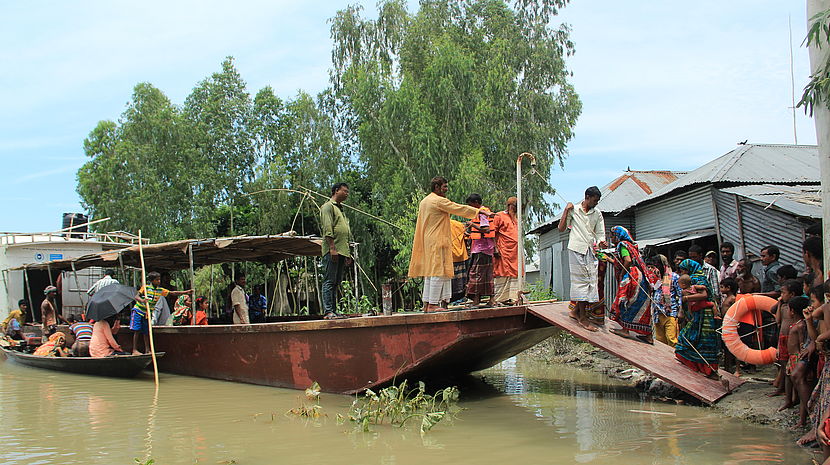CBM launches a guide for disability-inclusive Disaster Risk Reduction

People in flood affected areas of Gaibandha, Bangladesh, are evacuated with a wheelchair accessible rescue boat.
CBM/CDD
CBM is launching a good practice guide for disability-inclusive Disaster Risk Reduction, based on its longstanding experience in the flood affected communities of Gaibandha in northern Bangladesh.
Building the capacity of people with disabilities to become agents of change for inclusion in disaster risk reduction
"The Gaibandha Model"good practices guide outlines a framework for successful disability-inclusive disaster risk reduction programming. It is based on the experience of CBM and its partners in implementing community-based disaster risk reduction programs in some of the most flood-affected communities in Bangladesh. The model puts people with disabilities at the center of disaster risk reduction. They are the agents for change, working with the community to improve local systems of disaster prevention, -preparedness and -response to become more accessible and inclusive.
Download the guide here
Access the Gaibandha Model for disability-inclusive disaster risk reduction to learn how to support communities in becoming resilient and truly leaving no one behind.
Gaibandha Model for disability-inclusive disaster risk reduction
Disasters are on the rise and the exposure of many developing countries has increased faster than development has improved their ability to absorb and cope with them. Conflicts and natural disasters not only cause tremendous loss but also reverse development gains and hold back progress. Establishing resilient and inclusive communities, where nobody is left behind when disasters occur, is a core component of sustainable development.
Not everyone faces the same risk from disasters. People with disabilities and other at-risk groups are often forgotten in disaster risk reduction (DRR) programs and left behind when disaster happens. They are excluded from disaster preparedness measures, are invisible when it comes to community mapping or evacuation planning, find it harder to access shelters and safe spaces due to environmental barriers or protection risks and receive inadequate or inappropriate relief and support when they suffer from disaster loss.
More than ever before, inclusion is recognised as one of the great challenges of today’s development agenda and real commitments towards inclusion have been made on the international stage; for example, in the Sendai Framework for Action and in the Sustainable Development Goals. The real work starts now. Practitioners in DRR programs of NGOs and Governments alike must make sure that such commitments are translated into action.
We hope that this model will inspire our staff, our partners and all organisations working in disaster risk reduction, to take the actions needed to support communities worldwide to be resilient and to leave no one behind!